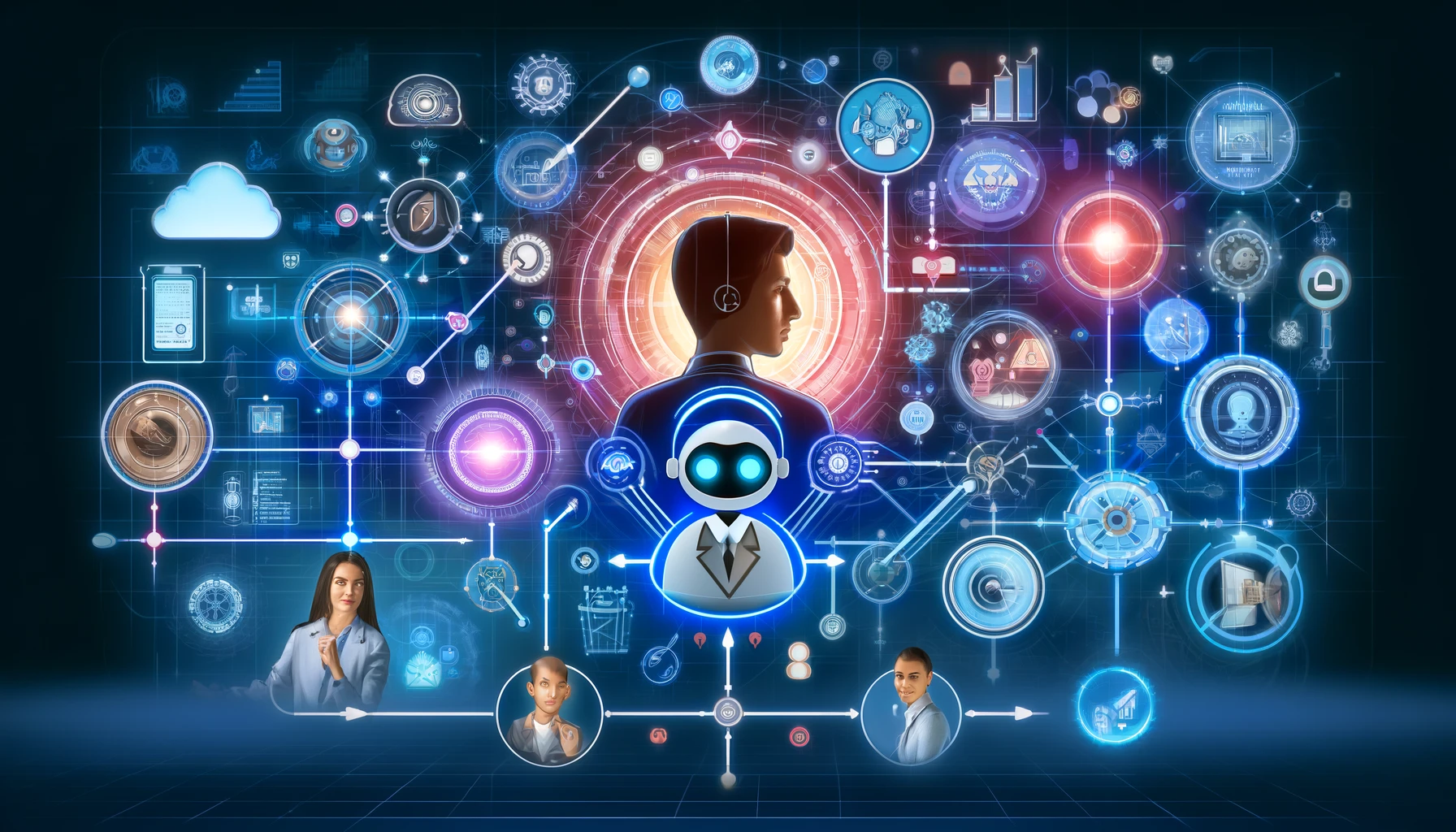The increasing integration of Artificial Intelligence (AI) in various industries has brought about innovative solutions to improve customer interactions and operational efficiency. One such innovation is the multi-agent framework for building chatbots. This approach redefines how chatbots function by leveraging multiple AI agents to handle complex tasks. In this article, we'll cover the basics of what an AI agent is, how they work together, and how this concept can be applied in real-life scenarios to enhance performance and user experience.
What is an AI Agent?
An AI agent is a piece of software that leverages artificial intelligence to complete specific tasks, often autonomously. In the context of chatbots, AI agents are designed to interact with users by understanding their inputs and providing accurate and useful responses. Each agent is typically specialized in handling particular types of queries or "user intents."
How Do AI Agents Work Together?
In a multi-agent framework, multiple AI agents collaborate to offer more comprehensive and efficient solutions. In GPT-Trainer, the premier multi-agent chatbot builder, these agents are classified into two types:
- User-Facing Agents: These agents interact directly with users, handling questions and requests in a conversational manner.
- Background Agents: These agents do not interact with users directly. Instead, they monitor the overall conversation, assist User-Facing Agents, and sometimes perform tasks such as data retrieval and processing.
Let's take a simplified look at how these agents work together:
- User Input: A user initiates a conversation by typing a query into the chatbot.
- AI Supervisor: The system features an AI Supervisor that determines which User-Facing Agent is best equipped to handle the particular query. This decision is made based on pre-defined specializations and agent descriptions. This is like having a human supervisor who delegates a task based on the strengths of their employees.
- Task Allocation: The selected User-Facing Agent then engages with the user to provide an answer.
- Background Operations: Simultaneously, Background Agents may spring into action to gather necessary information or support the User-Facing Agent. Think of these agents as the people who are involved with every project, with their fingers on the pulse of your organization.
- Response: The final response is presented to the user, often in milliseconds, thanks to the coordinated efforts of multiple agents.
How Multi-Agent Chatbots Can Be Applied
The multi-agent framework is not just a theoretical concept but has practical applications that significantly enhance business operations and customer satisfaction. Here are a few real-world scenarios:
1. Customer Support:
Imagine a customer support chatbot for an e-commerce platform. Multi-agent chatbots can effectively manage various customer service needs, from tracking orders to processing returns.
- Order Tracking Agent: Specializes in providing tracking information.
- Returns Agent: Handles return requests and related questions.
2. Lead Generation:
In marketing, multi-agent chatbots can be programmed to qualify leads and collect customer information.
- Lead Collection Agent: Asks users for contact details and stores the information systematically.
- Product Information Agent: Provides potential clients with detailed product information to move them further down the sales funnel.
3. Specialized Knowledge:
Businesses often need to address highly specialized queries.
- Product Specialist Agent: Companies might use agents that only deal with different types of products. For example, an HVAC company may have a heating specialist, and a cooling specialist!
- Technical Support Agent: Handles technical issues and troubleshooting.
4. Unrelated Query Handling:
A business may want to focus its chatbot’s efforts on high-value tasks and deflect non-related inquiries.
- General Inquiry Agent: Handles all unrelated queries not directly tied to the main purpose, such as asking the chatbot for general advice or writing assistance. Avoid having users write school essays using your chatbot!
Benefits of Multi-Agent Chatbots
- Efficiency: By delegating tasks to specialized agents, responses are quicker and more accurate.
- Scalability: Businesses can add new agents for new tasks without disrupting the existing system.
- Customizability: Different agents can be fine-tuned for various needs, allowing businesses to adapt the chatbot to specific requirements.
- Improved User Experience: Users receive more precise and useful responses, leading to higher satisfaction.
Conclusion
The multi-agent framework is revolutionizing the way chatbots operate, making them smarter and more efficient. By employing multiple specialized AI agents for different tasks, businesses can offer better customer service, generate quality leads, and handle specialized queries effortlessly. As AI technology continues to evolve, the capabilities and applications of multi-agent chatbots are expected to expand, providing even more value to businesses and their customers alike. Here at GPT-Trainer, we are dedicated to providing you with the latest advances in multi-agent technology -- no coding experience necessary. If you are curious, sign up for a trial and experience the power of having multiple AI agents working for you!

